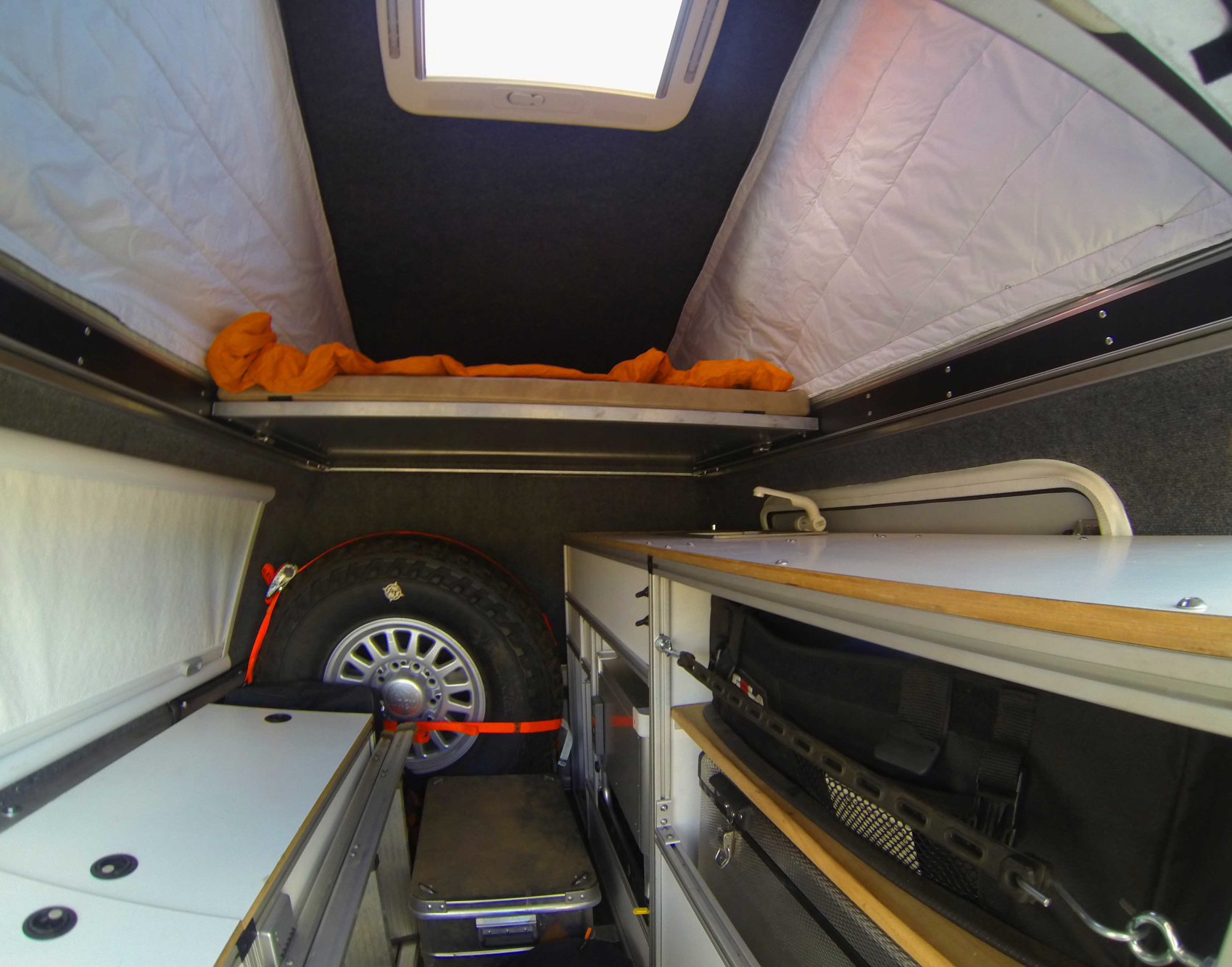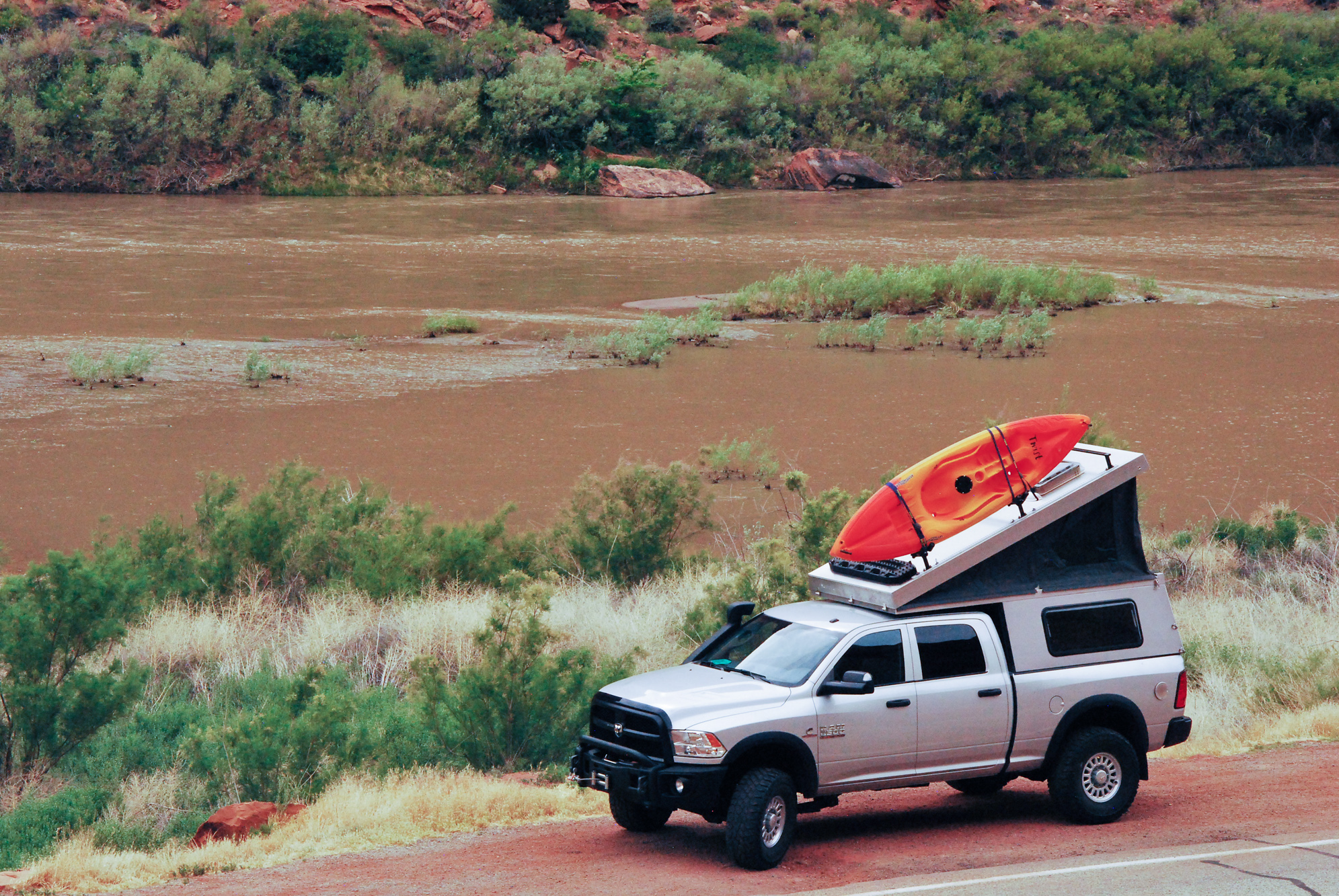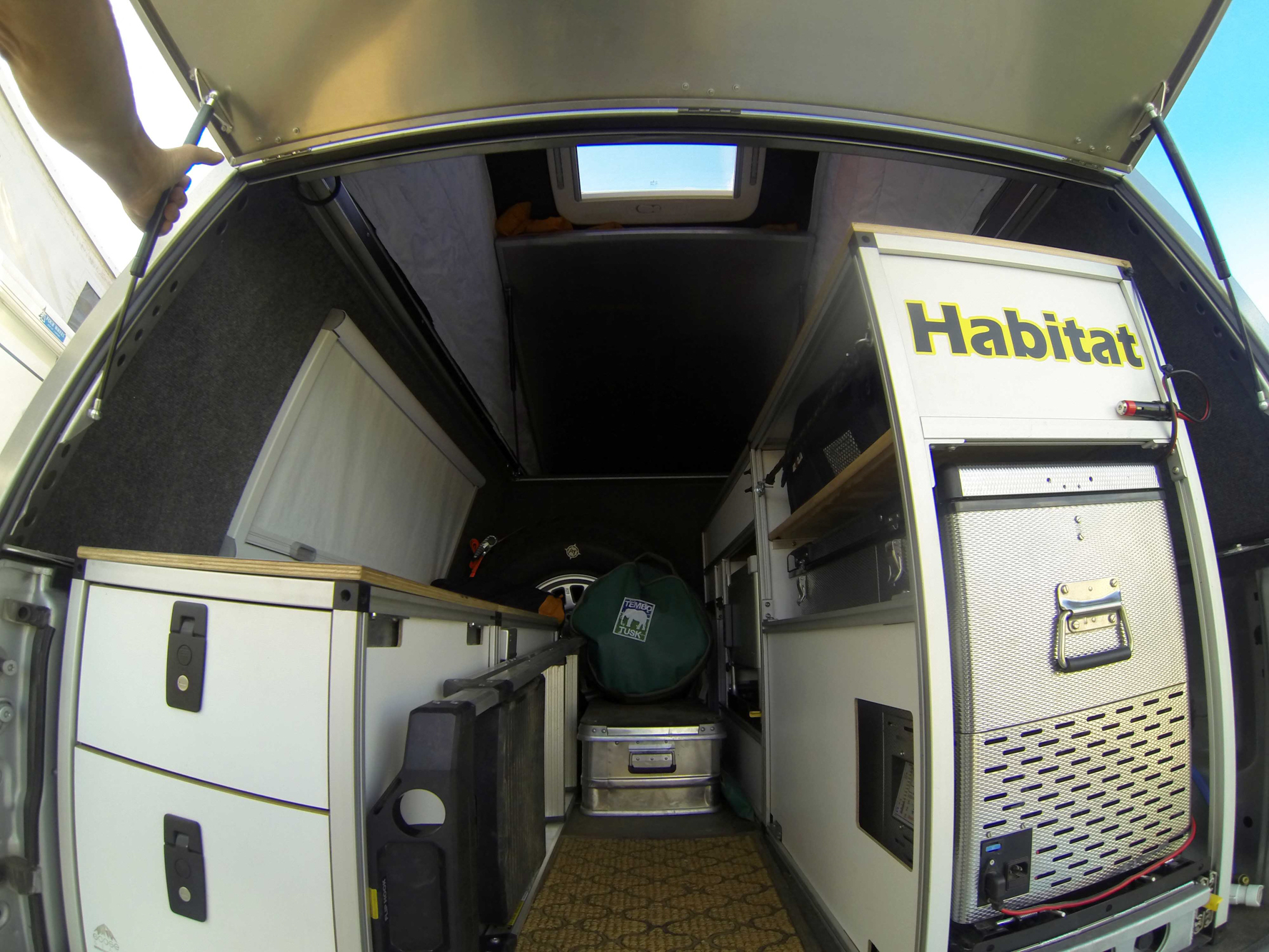Just last week we released an article on a new wedge shell from Vagabond Outdoors. It challenged the existing options from Go Fast Campers, and we knew it was only a matter of time before AT Overland released their own wedge shell. After all, we had first talked to them about it over a year ago. Well, our patience was finally rewarded at Overland Expo with the introduction of the Summit. This next evolution in AT’s product line is designed to bridge the gap between a traditional truck cap and a slide-in camper. Like the other wedge-style shells we have covered in recent months, it is designed to be spacious and lightweight and also boasts a range of optional features that could place it squarely in the lead for comfort—but at the high end of the price range in the market. I had the opportunity to spend a night in it this past weekend and decided to throw in some of my initial impressions along with this first look.

The Summit is designed to sleep two people and allow one person to stand or work in the lower quarters while the other remains in bed. When the wedge is deployed, there is up to 8 feet of vertical space, with a low point of 6 feet on the opposite end. The bed has just over 3 feet of headroom at the higher end and 80 inches of length with 48 inches of width. That was plenty of space for me to comfortably sit up and move around in, but I found the foot space to be limited, as anyone over six feet tall will in any style wedge camper. The mattress is 2.5 inches thick, but the material used was extremely comfortable, and I found myself sleeping through the night and waking with zero pain after laying on my side. When not in use, the bed pivots up on gas struts and stores out of the way, giving you the entire truck bed as a living and working space.


Opening the shell is a breeze thanks to gas-assisted lift struts, and there is a lock-open feature to prevent the top from closing in the event of high winds or a snow load on the roof. When closed, there is still enough room to keep your bedding in place, which saves the hassle of setting up your sleep space every night.
The Summit is constructed from 5052 CNC formed aluminum and honeycomb composite, which brings the total weight to 340 pounds and allows the shell to support up to 100 pounds of cargo on the roof. This material also makes it possible to attach flush-threaded fasteners in order to mount a variety of gear and provides a level of insulation for temperature control. The roof has been insulated to control both temperature and condensation, but the really impressive part is the tent. The standard model features wax-impregnated fire-retardant canvas that is breathable and waterproof, but there is an optional fire-retardant, light-blocking, Thinsulate liner available with matching window openings. This turns the Summit into a true four-season camper, especially when paired to a propane, diesel, or gas heater like a Propex, Espar, or Webasto.

Although the standard shell will have solid sides, there are double-pane acrylic windows available, with Euro-style openings featuring retractable bug screens and thermal curtains. These were extremely nice, but it was the roof window that had me excited. It is positioned to allow an occupant to stare up at the stars and also features lighting which can be easily turned on from the bed. Of course, if you feel like sleeping in, you can also shut the screen for complete darkness. If windows aren’t your thing and you want more gear access, there are also upward opening weathertight locking cargo doors available.

Based on my single night of use, I was really impressed with the Summit camper. It provides the easy setup and hard roof of a slide-in with the lightweight and lower price point of AT’s existing habitat system. It is comfortable, quiet, and spacious enough for any work or relaxation activities you need to tackle on the road. While there will certainly be cheaper wedge options, the Summit’s long list of features ensures that there will be few better equipped for your next adventure. We look forward to getting a more extensive experience with it in the future.
The Summit is currently available in 5.5-, 6.5-, and 6.75-foot bed sizes for full-size trucks, and 5- and 6-foot bed sizes for mid-size trucks. To learn more, contact AT Overland at 877-661-8097 or info@adventuretrailers.com.
AT Overland Summit TM Truck Top Camper Specifications:
– Stainless Steel hardware
– Aluminum clad honeycomb panels
– 0.60″ 5052 CNC formed aluminum with protective clear coating or optional paint
– Base weight: 340 lbs.
– Roof weight lifting capacity: 100 lbs.
– Closed roof capacity: 600 lbs.
Summit closed:
– 32.75″ tall with roof Bars, 32.25″ Tall with Track only (add 2″ for Full-size trucks, add 4” for F-250-350)
– 53″ Wide at top
– 124″ Long at top
– Mid-size length at base: 5′ = 64.375 & 6′ = 76.375″
– Mid-size width at base: 64″
– Full-size length at base: 5.5′ = 67.5″ 6.5′ = 79″ 6.75” = 84”
– Full-size width at base: 70″
Summit open:
-80″ x 48″ x 2″ Hi-Density Foam Mattress with washable cover -80″ x 48″ x 2.5″
-96″ Standing room at Rear, 72″ Standing room at front when deployed.
-37″ of headroom over bed area
Roof Overhang for 5′ & 6′ Mid-size Trucks (Tacoma, Colorado, Frontier):
-51″ on 6′ bed, 63″ on 5′ bed
-23″ from top of truck bed to underside of overhang
Roof Overhang for 5.5, 6.5 & 6.75’- Full-size Trucks (Tundra, Ram, F-150-250-350, Silverado):
-66″ on 5.5 bed, 48″ on 6.5 bed, 45” on 6.75 bed
-25″ from top of truck bed to underside of overhang (27” F-250-350)


